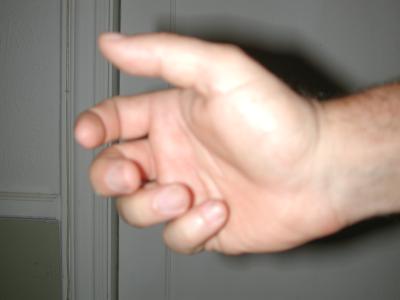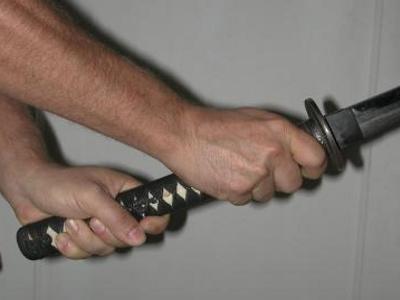The Whirling Circles of Ba Gua Zhang (Part 2)
/ Here I continue my commentary on The Whirling Circles of Ba Gua Zhang, by Frank Allen and Tina Chunna.
Here I continue my commentary on The Whirling Circles of Ba Gua Zhang, by Frank Allen and Tina Chunna.The first section of the book is called "The Origins of Ba Gua Zhang: A Blend of History and Legend." It is the most complete collection of stories about baguazhang that I've seen. It follows all the various lineages down from Dong Haichuan. Wow, how do I put this? Writing should be like fighting a war. I fell asleep six times reading this section.
Still I found lots of material that was new to me. I didn't know that Wang Shujin spent a year studying with Wang Xiangzai, the founder of Yiquan. Hong Yixinag and Wang Shujin Yi were both members of the Yi Guan Dao religious society. "The outer teaching of the sect revolved around the belief that Daoism, Buddhism, Confucianism, Islam and Christianity are all different expressions of the same universal and unwavering Dao, while the esoteric teaching of the sect involved various qi gong and other energy practices. " Wang was a Yi Guan Dao leader and thus fled with the Nationalists to Taiwan in 1948.
This section has lots of interesting material I didn't know before. I think my frustration with it stems from that fact it wavers between the encyclopedic tracking of all the various bagua masters, and stories about them. Should I memorize these stories? Is there some teaching point behind them? Does this history mean anything?
I know a reason these histories are important. If you go into any park in the morning, anywhere in the world where there are people practicing Chinese martial arts, and do your baguazhang, people will come up to you and ask where you learned. They will probably trace you back to a common gongfu ancestor with someone else in the park. Chances are good that they will ask you to perform and that if you have been taught correctly you will refuse twice, saying each time that you really are not good enough, that you would only embarrass your teacher, and that only your teacher's teacher was really great. But the third time they ask you, it becomes your duty to perform. The benefit of this is that after you perform you can point to anyone who was watching and they will obligated to show their stuff. It's kind of like a drinking game with your "new family."
There is also another reason. Many of us want to know how our individual style got its characteristics. The authors do a good job of tracing this "progress" or "decline" (which ever you prefer) from Dong Haichuan. However; where Dong Haichuan learned his Baguazhang is at this point, just a bunch of ledgends and unconvincing theories.
Frank Allen's main teacher is B.K. Frantzis and since I also do his style of Baguazhang, we have the same lineage through Frantzis to Liu Hengjie (Liu Hung Chieh).
In the section on forms (p. 87-88) the Authors explain why Liu Hung Chieh didn't teach a Baguazhang form and why his style is not orthodox Yinfu or Cheng Tinghua:
While still in his teens, Liu Hung Chieh became the disciple of bagua master, Liu Zhenlin. Liu Hung Chieh furst studied with Liu Zhenlin when Liu was teaching in the school of Cheng Tinghua's son Cheng Youlung and Dong Haichuan's student Liu Dekuan. Liu Zhen Lin was a famous fighter and bodyguard who first studied bagua under Yin Fu's student Liu Yongqing (who was a close friend and training partner of Yin Fu's top student, Ma Gui). The young Liu Zhenlin learned all of his basic bagua from these two masters, but his teachers brought him to bow before and become the disciple of court minister Liang Zhaiwen; in this way, Liu Zhenlin received entry into the third generation of bagua masters, which was the same generation as his foundation teachers. Liang Zhaiwen was a military man who had been the chief guard at the most important fire gate on the Great Wall before becoming a court minister. Due to Liang's position in lthe court, his association with the palace eunuch servant Dong Haichuan was not widely known until after Liang's death. Because he was the top student of Liu Zhenlin, it is same to asume that young Liu Hung Chieh also received training under his teacher's gongfu "uncles," Liu Yongqing and Ma Gui.
I am indebted to the authors for supplying this history even if my regular readers are likely to find it on the boring side. I promise to spice things up in the next couple of posts!
The authors go on to say that Liu Hung Chieh spent many years studying Daoist Circle Walking Meditation which influenced the development of his style of practice and teaching. In my opinion, someone, very possibly Liu, studied Daoist exorcism, not just circle walking. From my experience of Daoist exorcism it is a more likely source for the diverse phyiso-spirit knowledge that Liu passed on to B.K. Frantzis, (even if I'm the only one who thinks so.)
Buy it From Amazon

 Not long ago I read somewhere that Martial Artists are left handed way out of proportion to their presence in the general society. At the time my morning class was 70% lefties.
Not long ago I read somewhere that Martial Artists are left handed way out of proportion to their presence in the general society. At the time my morning class was 70% lefties. Is this because us lefties have some advantage in fighting? Or do we
Is this because us lefties have some advantage in fighting? Or do we just have more inner torment because deep down, we know we don't belong? In Italian left hand is "mano sinistra", the sinister hand.
just have more inner torment because deep down, we know we don't belong? In Italian left hand is "mano sinistra", the sinister hand. The problem is doubled for lefties with long legs. Not that I ever
The problem is doubled for lefties with long legs. Not that I ever accepted my victim hood; I refused to sit in these types of chairs in high school. If the classroom had them I brought along a foam backpackers mat and sat on it against the wall in the back of class.
accepted my victim hood; I refused to sit in these types of chairs in high school. If the classroom had them I brought along a foam backpackers mat and sat on it against the wall in the back of class. If you haven't read Yang-Chu, I recommend it. Yang-Chu is considered one of the early voices of Daoism (300 BCE), a voice for wuwei.
If you haven't read Yang-Chu, I recommend it. Yang-Chu is considered one of the early voices of Daoism (300 BCE), a voice for wuwei. first heard this I was in shock for a few days. Why was I bothering with all the little details, like doing the dishes and "communicating" if almost all the significant data was in a 15 minute video interview? Is it possible that we really don't have free will?
first heard this I was in shock for a few days. Why was I bothering with all the little details, like doing the dishes and "communicating" if almost all the significant data was in a 15 minute video interview? Is it possible that we really don't have free will?
 I stopped at a gas station in the middle of nowhere on the way to the mountains last month. I checked the oil and it was pretty low so I bought a couple of quarts. I worked in a gas station when I was 14 so I know some tricks for getting a good grip, but my engine was really hot and the oil cap wouldn't budge. I went looking around in my trunk for someway to get more leverage and came up empty. I felt my manhood was being challenged. Just then a thick stocky man, about 6 inches shorter than me said, "Can I give you a hand." I'm sure I looked embarrassed but then I looked at his hands and they were clearly twice the size of mine, his fingers were as thick as cigars. "Sure, uhh...thanks" I said, and he unscrewed it. I asked where he got such huge hands and he said it was his Scottish ancestry.
I stopped at a gas station in the middle of nowhere on the way to the mountains last month. I checked the oil and it was pretty low so I bought a couple of quarts. I worked in a gas station when I was 14 so I know some tricks for getting a good grip, but my engine was really hot and the oil cap wouldn't budge. I went looking around in my trunk for someway to get more leverage and came up empty. I felt my manhood was being challenged. Just then a thick stocky man, about 6 inches shorter than me said, "Can I give you a hand." I'm sure I looked embarrassed but then I looked at his hands and they were clearly twice the size of mine, his fingers were as thick as cigars. "Sure, uhh...thanks" I said, and he unscrewed it. I asked where he got such huge hands and he said it was his Scottish ancestry.


 hand doesn't usually close.
hand doesn't usually close. is painful to hold a solid, tightly packed fist for five minutes unless your technique is good. If it hurts, it is wrong (the spirits have left the body.)
is painful to hold a solid, tightly packed fist for five minutes unless your technique is good. If it hurts, it is wrong (the spirits have left the body.) Still, I developed the ability to see and correct alignment problems, and to spontaneously create simple exercises that release tension and increase mobility in joints. This ability is a kind of intuition.
Still, I developed the ability to see and correct alignment problems, and to spontaneously create simple exercises that release tension and increase mobility in joints. This ability is a kind of intuition. The ninth precept, yielding to others, is wuwei. The first precept probably works better in English as "Be Honest." The second precept is often the tough one for people. The flexibility part sounds cool, but the weakness part is confusing. Here is what
The ninth precept, yielding to others, is wuwei. The first precept probably works better in English as "Be Honest." The second precept is often the tough one for people. The flexibility part sounds cool, but the weakness part is confusing. Here is what  It's been a busy weekend but I've been reading this
It's been a busy weekend but I've been reading this 
 I just wrote a long response to José de Freitas whose comment at the end of the
I just wrote a long response to José de Freitas whose comment at the end of the